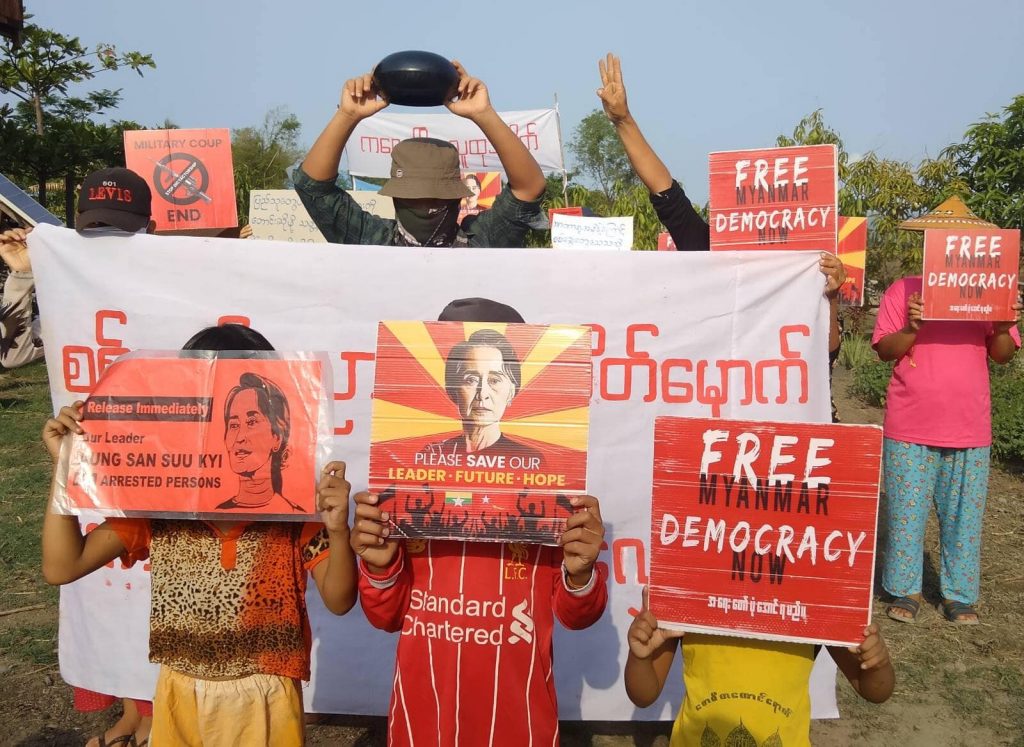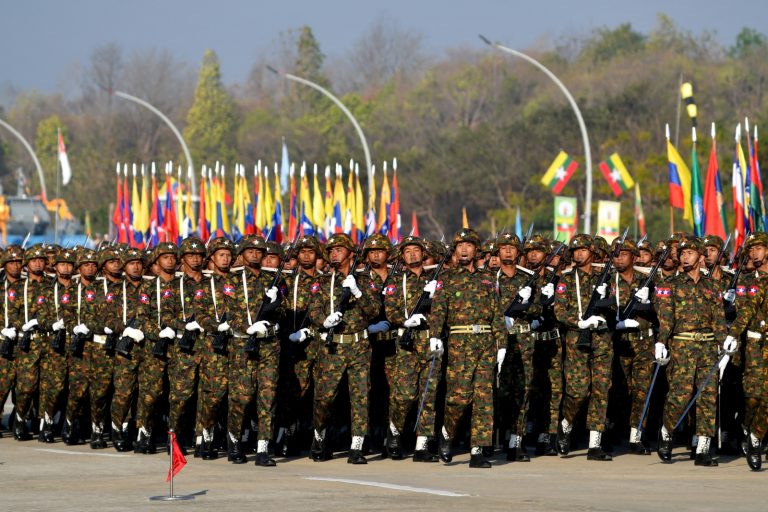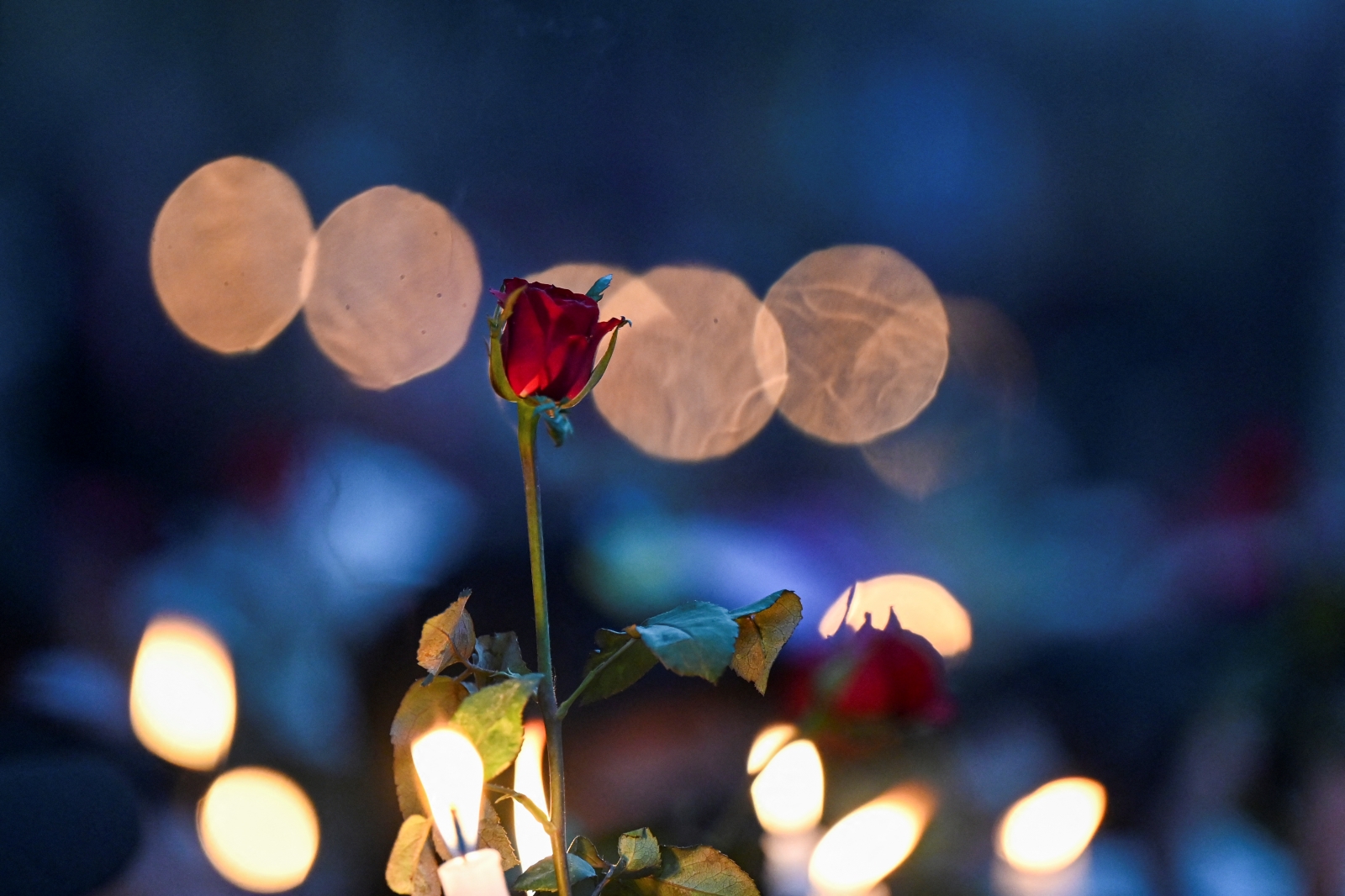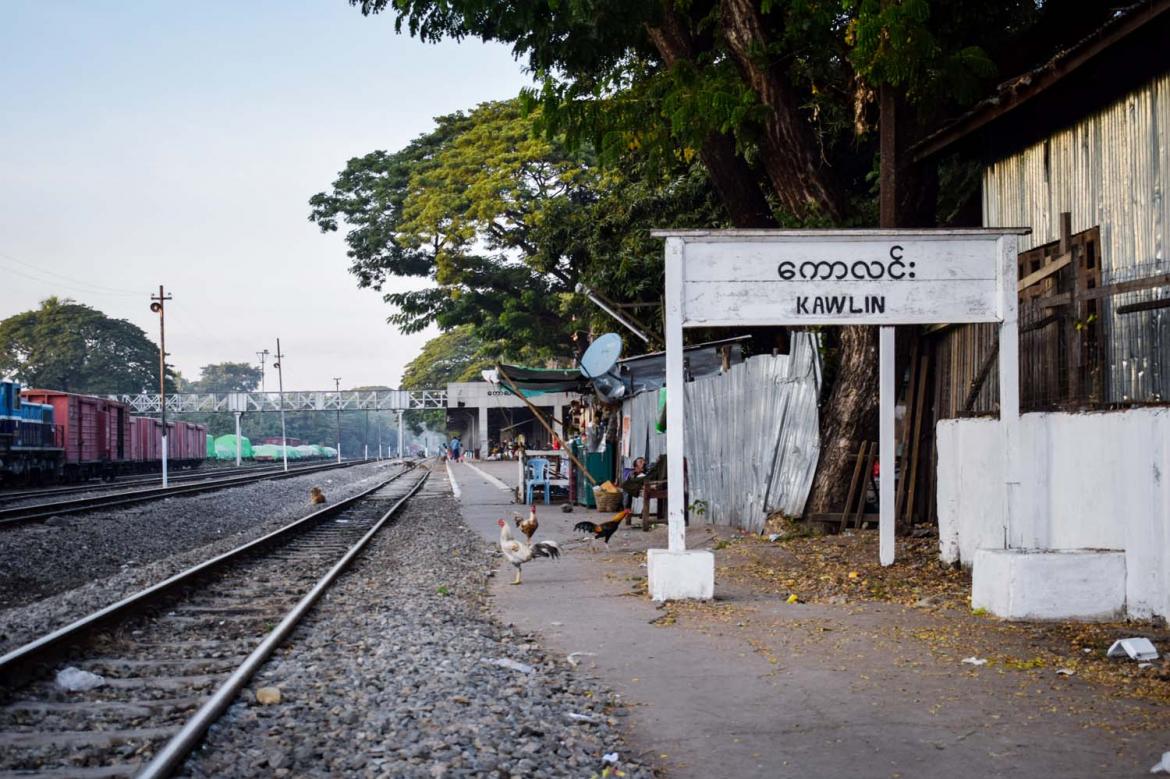As demonstrations against the coup in most of the country have become a rarity in the face of brutal repression, a small, defiant group in Kalay is nearing 500 days of continuous protests.
By FRONTIER
On May 25 the Kalay Strike Force gathered for the same reason they had for the last 472 days in a row: to protest against the 2021 military coup.
“Since we began protesting in February, the military has launched at least 35 crackdowns against us, using various forms of violence,” protest leader Ko Bike Pu* told Frontier.
In the weeks after the military’s seizure of power on February 1 last year, crowds of hundreds of thousands joined protests throughout the country, until the ruthless use of lethal force cleared them off the streets.
While the bloody crackdowns convinced many to turn to armed revolution, some have continued to bravely express non-violent opposition to the junta, with occasional flash-mob protests reported in Yangon and other cities. In Sagaing Region’s Kalay Township, protests that began on February 7 of last year have never stopped.
“There have been many deaths, injuries and arrests but we move forward. We will never retreat. We want the whole world to see that the people in Kalay have not accepted the regime and are protesting against the coup by non-violent means,” Bike Pu said.
Kalay Township in northwestern Sagaing borders Chin State and nearly half of its 350,000 population is ethnic Chin, according to 2019 figures from the General Administration Department. Kalay city, a district capital only a few kilometres from the Chin border, is an important business and industrial centre and has many government offices.
Both Sagaing Region and Chin State have seen some of the fiercest fighting since the coup, largely led by newly formed anti-coup armed groups that are assisted by more established ethnic armed organisations.
Kalay Township was the scene of one of the first indications that people were beginning to fight back against the military’s increasingly brutal crackdowns. On March 28, 2021, four civilians were killed in an attack on a protest camp called the Tarhan fortification, which infuriated the general population. When the military launched another attempt to seize the camp on April 7, activists armed with traditional home-made tumi rifles fought back against much more heavily armed soldiers. At least eight civilians were said to have been killed during that clash.
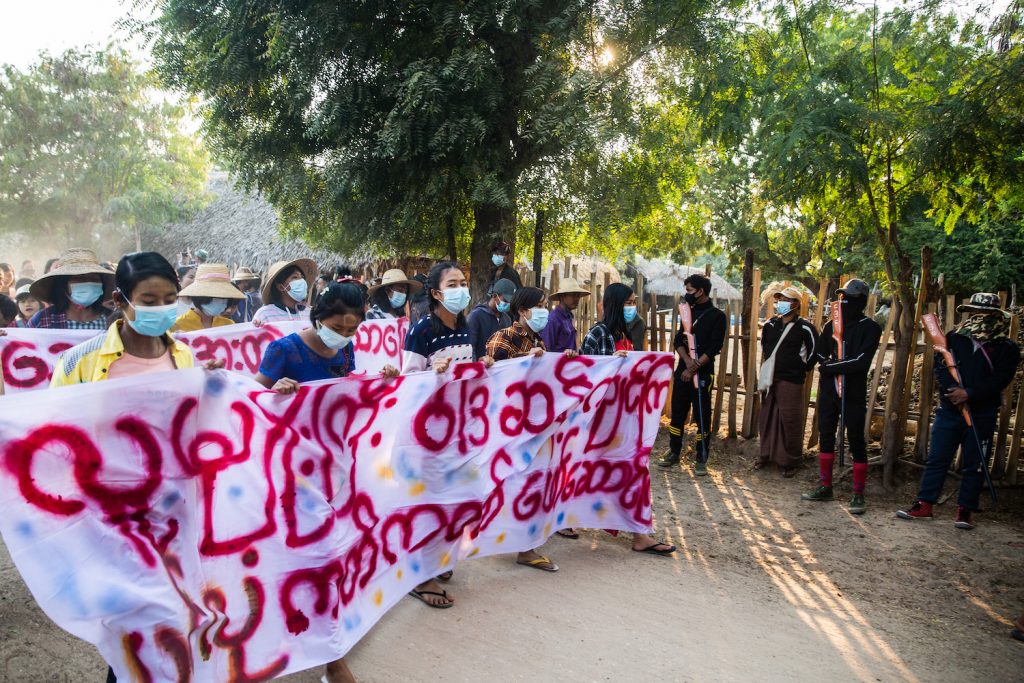
Early days of the protest
On February 7, 2021 the first mass protest was organised by the Kalay University Students’ Union and the All Burma Federation of Student Unions (Kalay Township) together with political parties and civil society groups. Hundreds joined the first demonstration and by March the numbers were in the thousands. As the ranks swelled, junta forces escalated their attempts to suppress the peaceful protests.
On March 17, while Bike Pu was leading a protest along a road between Mya Hla and Taung Thar villages west of Kalay city, three military vehicles packed with soldiers drove towards them. The protesters dispersed and Bike Pu sprinted into a field of wheat as soldiers opened fire. The bullets missed and he reached a building site on the other side of the field unscathed.
“With help of construction workers, I pretended to be one of them and worked on the site for the rest of the day. It was the construction workers who gave me the name ‘Bike Pu’”, he said. Bike Pu means “big belly”.
It was a lucky escape from serious injury or death for Bike Pu, but tragedy was not far away. On March 27, fortified protest camps were built in Tarhan and Taung Thar ward, in order to provide places of refuge for unarmed protesters during junta crackdowns.
“People remained in the Tarhan camp overnight in case it was attacked. We were prepared to defend ourselves with tumi rifles, air rifles and hand-made firearms,” said Ko Wai Naing Oo*. The 22-year-old ethnic Chin is a former protest leader who has since become the commander of the Kalay People’s Defence Force Battalion 1.
Civilians in Kalay first sought military training from the Chin National Front in April, after a series of violent crackdowns. Originally called the Kalay Civil Army, it subsequently rebranded to Kalay PDF, and now serves under the authority of the National Unity Government, a parallel administration set up by elected lawmakers in defiance of the coup. Fighters said the Kalay PDF consists of nine battalions of 250-300 soldiers and operates under the NUG defence ministry’s Western Command.
The March 28 attack left eight people dead, including three women. But the attempt by junta forces to seize the camp failed because of the fierce resistance of Kalay residents.
“We were the first to attack junta troops with tumi rifles during the Spring Revolution. We were also the first to form a local resistance group, the Kalay Civil Army,” Wai Naing Oo said with pride.
The KCA was formed on April 7, the day when junta forces used heavy weapons and explosives to destroy the Tarhan protest camp in an operation that left 12 people dead and many injured.
“We suffered heavy casualties in the battle of Tahan. It is impossible to defeat the military with home-made weapons, but because of the strong emotions and outrage over inhumane behaviour, we fought back against junta troops,” said Wai Naing Oo.
After its brutal seizure of the Tarhan camp, there was a wave of arrests of protesters and locals accused the junta of shooting civilians indiscriminately, including random bystanders. The Kalay Strike Force said 150 people were killed and 500 arrested in Kalay Township within one year of the coup.
As resistance to the junta gained momentum, the military began monitoring the protests more closely, resulting in more arrests. After the April 7 junta raid, the number of protesters declined sharply, either because of fear of arrest or because they had joined the armed resistance.
Those who were determined to continue protesting changed tactics and began holding flash-mobs in the city’s outskirts, brandishing anti-dictatorship banners before quickly dispersing.
They regularly post about their activities on the Kalay Strike Force Facebook page, but are careful never to mention the location of the flash mobs in advance. Amid the heightened repression, protest organisers have worked closely with PDFs and urban guerrilla groups to provide security for the protesters.

‘I used to wonder if it was right for me to do nothing’
On August 26 of last year, the 400th day of the protests, 12 women were arrested and several other people injured when soldiers kettled a protest by blocking off exits with vehicles. In March of this year, the military dealt a devastating blow to the movement when it arrested protest leader Ko Myo Thit Kyaw.
Since then, protesters have been gathering in a small village in Kalay Township under the protection of the Kalay PDF Battalion 6, where they continue to hold flash-mob protests and share their activities on their social media page.
“They [junta troops] are closely monitoring our activities. We have to be very careful because we are taking a lot of risks to demonstrate daily,” said Ma Ei San, 34, who has three daughters aged between three and 15.
Ei San joined the protests after the junta’s assault on the Tarhan protest camp on March 28 last year. She said prior to the coup, she ran a sewing business and had little interest in politics. But the military’s ruthless suppression of peaceful protesters, many of whom were her neighbours, motivated her to join the demonstrations.
“Protesters passed in front of my house every day and I used to wonder if it was right for me to do nothing. Finally, I decided to join the protest group. It was not an easy decision for me to make because I have had to give up my whole life,” Ei San said.
After her house in Kalay city was raided twice, Ei San went into hiding with her 15-year-old daughter while her husband lives elsewhere with her two other children. Ei San is proud of her eldest daughter, who has joined the anti-coup movement. “She is the main writer of the protest banners and also takes part in the protests,” she said.
Clashes between regime forces and other resistance groups are ongoing throughout the country, with Sagaing emerging as a major hotspot for armed conflict. The latest report from the Institute for Strategy and Policy Myanmar says there were at least 439 clashes in Sagaing Region between July 1, 2021 and May 15, 2022, the second highest in the country after Kayin State. Figures from monitoring group Data for Myanmar show that 7,500 of the 10,000 houses torched by junta forces were in Sagaing Region.
Despite persecution and the risk to their lives, the protesters say they are determined to continue peacefully demonstrating in order to maintain revolutionary fervour at home and show the world that the people still oppose the military.
But some in Kalay do not seem to appreciate the sacrifices.
“Some people do not like us because they believe the military is oppressing Kalay residents because of the protests. It’s very depressing to hear that,” Ei San said. “That’s why it helps to give us courage when someone posts encouraging comments about our protest activities on our Facebook page.”
* denotes the use of pseudonym upon request for safety reasons


